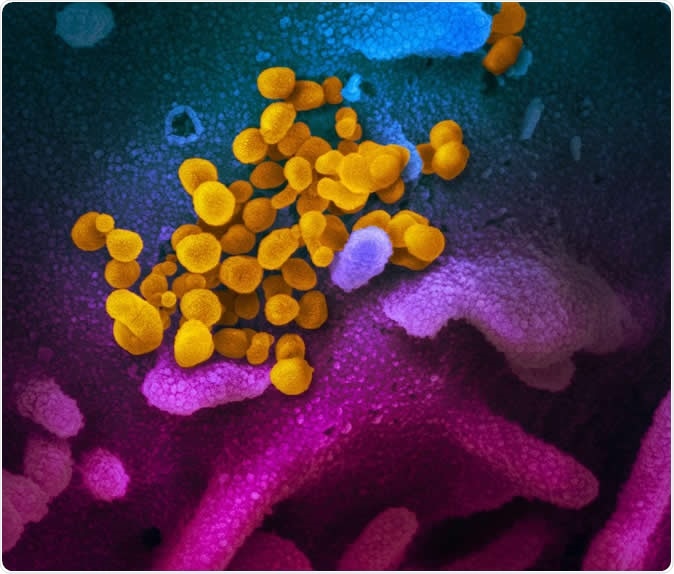A new study explores the possibility that the novel coronavirus, which is ravaging the world, can spread in hot and humid conditions, dispelling the view held by some investigators that the virus is more easily transmissible in colder climates.
The study published in the JAMA Network Open examines the possibility that the virus could have been spread by one infected person to 8 other people and showed no signs of weakening in warm and humid conditions. All nine people having used or worked at the same indoor public bath center.
The novel coronavirus called SARS-CoV-2 that causes the acute respiratory condition called COVID-19, emerged in China’s Wuhan city in Hubei province in December 2019. Since then, it has spread to 200 countries and territories all over the world, causing over 782,365 cases, and approximately 37,000 deaths.
How is the novel coronavirus different?
The virus is very similar to the earlier coronaviruses that caused severe acute respiratory syndrome (SARS-CoV) and the Middle East respiratory syndrome (MERS-CoV). Still, it is more easily transmitted from person to person than them. This is mostly through respiratory droplets and by physical contact. While symptoms of infection generally develop within 3-7 days, the incubation period can be as long as 24 days.

This scanning electron microscope image shows SARS-CoV-2 (yellow)—also known as 2019-nCoV, the virus that causes COVID-19—isolated from a patient in the U.S., emerging from the surface of cells (blue/pink) cultured in the lab. NIAID-RML
The infection may present as an asymptomatic carrier state, or cause acute respiratory symptoms or pneumonia. Most cases are adults, but babies, children, and the elderly can also be infected. Hospital-based transmission is occurring among healthcare workers as well as patients. Most patients with pneumonia show ground-glass opacities in both lungs on CT scans.
Severe cases are more likely to be older, with underlying sickness, and the outcome is correspondingly worse. The most common existing medical condition was high blood pressure, followed by diabetes mellitus and cardiovascular disease.
The study
The study centered on nine people from Huai’an city, 700 km northeast of Wuhan, in Jiangsu province, China, who were admitted to hospital between January 25, 2020, to February 10, 2020. Testing for SARS-CoV-2 was undertaken by performing quantitative reverse-transcription polymerase chain reaction (QRT-PCR) on samples from throat swabs collected from all patients. Computed tomography (CT) and blood examinations were also carried out to confirm the diagnosis.
The findings
The bath center had a swimming pool, showers, and sauna, with an area of about 300 square meters, 60% humidity, and a temperature between 25 °C and 41 °C. The index patient had visited Wuhan, and on his return showered at the bath center on January 18, 2020. The next day he developed a fever. He was confirmed to be COVID-19 positive on January 25, 2020.
The next seven patients had all used one of the facilities in the same center between January 19 and 24. All developed symptoms 6-9 days later. The last patient was working in the center and became symptomatic on January 30. All the patients were young, about 35 years old, on average.
The infection was confirmed by qRT-PCR in all cases. The other investigations supported the diagnosis. None of the patients required ventilatory support.
Why is the study important?
Earlier research indicated that the spread of the virus is much less under conditions of high humidity and temperature. However, the current study seems to show that the virus spreads with equal ease and rapidity in such environments as all. This is suggested by the cluster transmission of the virus to 8 healthy people who used the bath within six days of the index case.
Prevention of infection is critical. The only currently known way to prevent viral spread is to contain the virus by controlling the infection, preventing movement of potentially infected people among the uninfected by social distancing as well as isolation and quarantine, and adequate hygiene measures including frequent and thorough hand washing, using tissues or hankies to contain sneezes and coughs.
The use of personal protective equipment by healthcare workers is also essential. Meanwhile, those in contact with a confirmed case, or with someone from a high-risk location, should use extreme care to prevent acquiring the infection and spreading it to others. Many countries, irrespective of geographical locale or climatic conditions, have therefore resorted to lockdowns, urging their people to stay at home no matter what, except for rare and essential trips for food, medicine, or caregiving.
Source:
Journal reference:
- Luo, C., et al. Possible Transmission of Severe Acute Respiratory Syndrome Coronavirus 2 (SARS-CoV-2) in a Public Bath Center in Huai’an, Jiangsu Province. JAMA Network Open. 2020;3(3):e204583. doi:10.1001/jamanetworkopen.2020.4583